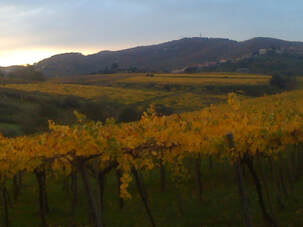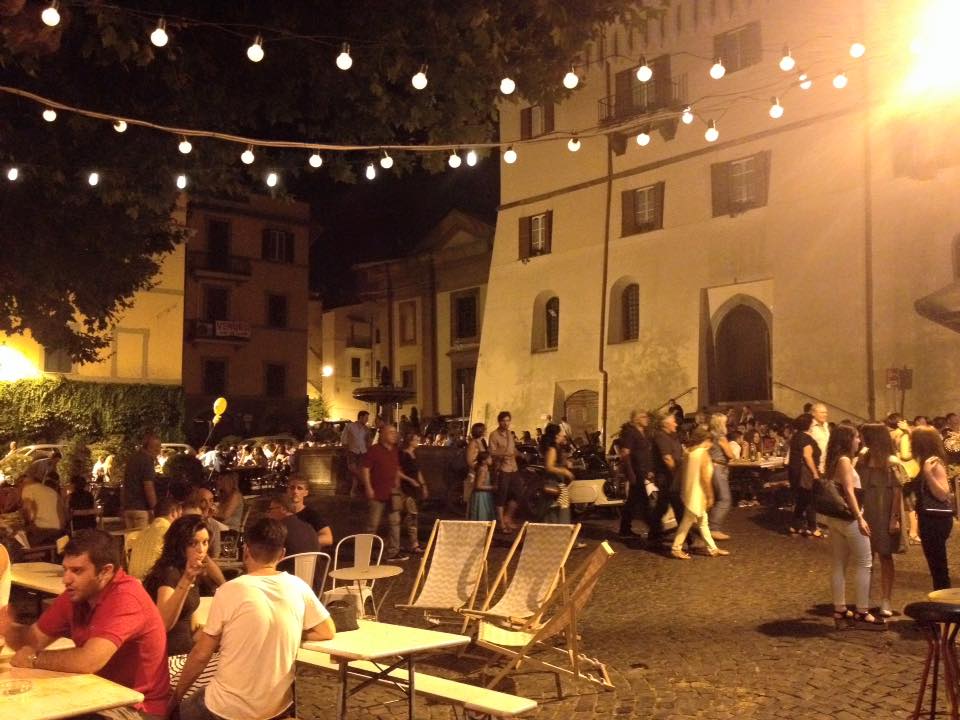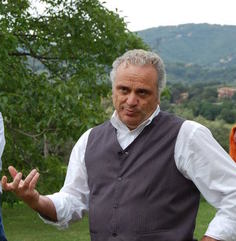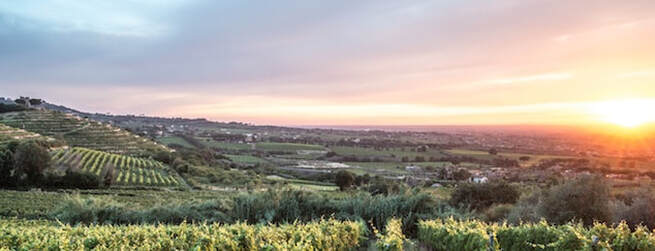|
Get ready to step back in time and experience Ancient Rome like never before at Rome World, the brand new theme park opening on March 24th next to Cinecittà World. It's a once-in-a-lifetime opportunity to immerse yourself in the culture and activities of an ancient Roman, all while surrounded by nature.
There are so many exciting things to do and see at Rome World, from thrilling gladiator shows to the chance to stay overnight in a camp just like a real Roman soldier. You can try your hand at archery, watch incredible falconry shows, and enjoy a delicious Roman lunch or dinner at the Taberna. And don't forget to browse the ancient market for souvenirs! For 2023, Rome World is introducing an exciting new feature: the Magic Forest. This enchanting path is lined with lights, projections, and sound effects, creating a truly magical experience as you explore the forest of cork oaks. As if that weren't enough, visitors to Rome World who hold an access ticket to the Capitoline Museums can enjoy free entry to the theme park, thanks to a collaboration between Cinecittà World and the Campidoglio. Rome World is dedicated to recreating the Imperial Rome experience, with the aim of immersing millions of guests and tourists in history over the years. And coming in 2024, don't miss "Rome on Fire," a stunning evening show set against the backdrop of the Ben Hur set. But the excitement doesn't stop there - on June 2nd, Aqua World will launch as the first phase of the new Cinecittà World water park. Relax on sandy beaches, take a dip in the Cinepiscina or the slow river Paradiso, and feel the rush of thrills on the two new large slides, Vortex and Boomerang. Get ready to embark on a truly magical adventure at Rome World and Cinecittà World. Let the fun begin!
0 Comments
Ciambelline al vino (FIVE GLASS METHOD)No eggs, nor butter!
(by the way, Ciambella in Italian is any thing ring shaped with a hole in the middle!!) Preparation 35 minutes Cooking time 15-30 minutes EASY Makes 20 biscuits ECONOMICAL 2 glasses of flour (ours is very fine called 00) 1 glass of sugar 1 glass of Extra Virgin Olive oil 1 glass of wine (white or red, your preferred) Pinch of salt Pinch of bicarb of soda (optional) Sugar for rolling Put the oil, wine and sugar in a mixing bowl and add the flour a little at a time and mix to form decent kneadable consistency (not too sticky) Knead well (like bread or pastry) let them rest for 30 minutes (covered with a tea towel or cling film). Break off pieces (approx 20) and make little snakes of dough roll in some sugar then link two ends to make a ring. Put on a baking tray and bake for 15 mins - 30 in a preheated oven at 150o- 175 C (cooking time depends on how big you make them). Keep an eye on them so they don’t burn. If you don’t like the consistency of your first try, you could use self raising flour the next time or add a pinch of baking powder. But it is the wine that should make the biscuits raise in the oven. Dip in wine and enjoy! (Ever wondered why Italian biscuits are so hard? Because they are supposed to be dipped in wine. If they were too soft, they would crumble into the bottom of your glass!)  The question many tourist are asking themselves: Is it safe to travel to Italy with the Coronavirus Covid 19 outbreak? Well you should consider these points. 1. It is possible that more cases have been reported because the Italian health authority has carried out more tests than anywhere else. (4000 compared to France's 300) 2. Italians like drama. 3.Italian media love to gossip instead of reporting. 4. Of the 12 deaths in Italy, most were already very ill with other pathologies. 5. Cases have been reported in Austria, Switzerland, Algeria...France are preparing. 6. One of the reasons it spread in Italy is because the first guy to catch it didn't report to his doctor, even though he had met with a friend who had just returned from China. 7. The case in Florence, was a Norwegian boy, who had also been in Munich and two weeks before he appeared to have the virus, he had been in his own country. So nothing excludes he didn't catch it in Norway. 8. There are carriers that have no symptoms, who could be anywhere in the World 9. More deaths occur for any 'normal' flu. 10. Not to mention for cancer, heat attacks, pollution.... 11. What is the answer? Use common sense, wash your hands well, avoid people that cough and sneeze, avoid touching handrails at the airport, malls, and maybe stuffy and closed places. Suggestion; take a nice trip to Frascati, in the fresh, open air, drink wine and make the most of life. 1. It is subjective! You need to think about what your expectations are. Do you just want a day away from the noise of the city, or are you looking for something more in-depth and educational.
2. Consider how long you want your tour to last. Do you want to spend a whole day or are a few hours sufficient. 3. Are you serious about your wine and fussy about what you drink and look for good wines. 4. Do you need a transfer from your hotel, airbnb, or would you consider a short train-ride. 5. Do you want to visit more than one winery. 6. Do you mind if the tour is run by someone without legal credentials. (In Italy you have to be a licensed tour operator to put just two services together - ie. Transport and guided tour, for example). 7. Do you mind if whoever is running your tour doesn't have insurance. 8. Do you want a private tour just for your own party, or would you like to mingle with other people in a large group. These are the main things to consider. There are some lovely wineries in Frascati so you have a host of choice to make sure you are getting a quality experience. Enjoy our lovely wine country!  Traditional Regional Cuisine The term “Roman Cuisine” doesn’t just refer to culinary specialities of the city of Rome alone, but also to dishes from the surrounding, neighbouring areas that have been strongly influenced by Roman traditional food specialities. Amongst which the nearest is, of course, the Castelli Romani,. An area that has always been the Capital’s pantry, vegetable garden and cellar. Important figures to remember, are the “carrettieri a vino’ that took wine into Rome overnight from the Castelli Romani, to replenish Rome’s Osterias, on their horse-drawn carts. The “Castellana” cuisine is abundant with famous dishes that are usually attributed to Rome, but which, in the “Castelli” take on new flavours and aromas, with the additional bonus of wonderful panoramas to admire straight out of the restaurant windows. The hospitality of the Castelli is also renowned; top-notch “oste” and restauranteurs bend over backwards to make their guests feel at home, whilst the fresh and crisp air will ensure a healthy appetite! Practically everywhere in the Castelli you can find dishes that are true to Roman tradition. This means you will easily come across typical pasta dishes such as: gricia, rigatoni cacio e pepe, bucatini all’amatriciana, fettuccine alla papalina, fettuccine con rigaglie di pollo, minestra di broccoli con arzilla, spaghetti alla carbonara, pasta con il cavolo, rigatoni con la pajata. Main courses such as abbacchio scottadito or alla cacciatora, trippa alla romana, coratella d’abbacchio, coda alla vaccinara, pollo alla diavola or with peperoni, saltimbocca alla romana, carciofi alla giudia, are just as common in the Castelli as in Rome. On the other hand, the most characteristic dishes of the Castelli Romani, are those based on local produce such as mushrooms (be they porcini, galletti or ovuli, gathered by licensed foragers in the local woods), chestnuts, broccoli, ‘regina’ beans, artichokes, fava-beans, asparagus (often of the wild variety), ramoracce (wild radish, charlock), chicory, cabbage, fish from the lakes and of course, game. It is hard to avoid mentioning Fettuccine ai funghi porcini, la Vignarola (a spring vegetable ‘stew’ made with fava-beans, artichokes, peas, spring onions, lettuce and jowl bacon), Regina bean and chestnut soup, matticella artichokes. This is just the tip of the iceberg though! Dry patisserie can be found in every bakery, restaurant and osteria: biscuits, ciambelline al vino (remember that anything with a hole in it in Italy takes the name of doughnut!), pangiallo (a dense mix of dried fruit, candied peel and nuts), tozzetti (like cantucci but with hazelnuts) and mostaccioli (chewy biscuits, yet again with dried fruits, nuts, spices and honey). All of the recipes from Rome and the Castelli, including the desserts, should of course be rigorously accompanied with the famous DOP, DOC and DOCG local wines: Frascati, Frascati Superiore, Colli Lanuvini, Colli Albani, Castelli Romani, Cannellino, Velletri, Marino, Monte Compatri-Colonna. To find out more here is a link to a guide of Typical dishes of the Castelli Romani  Tourists in Rome head to Trastevere to try to get a taste of authentic Rome in the evenings. It is, after all, a place full of restaurants, wine bars and ice cream parlours. With old lanes, beer bars and shops open till late in the Summer. Romans will all have their favourite pizza place and pizzerias like Popi Popi have been there for decades, even though now, handsome and charming Italian waiters have been replaced with cheaper foreign labour. So where do the Romans go when Trastevere fills up with tourists in shorts-and-straw-hats--licking-ice creams? To Frascati of course. Just as they always have done. They know that it is at least 3 or 4 degrees centigrade cooler and that there is usually a lovely evening breeze. 350 meters above sea level, the ancient Romans used to go there for the same reasons as people do today: fresh air, good food, good wine and good company. Piazza San Rocco is the latest favourite Piazza (in the photo), and there are a host of great wine bars, restaurants and award winning gelaterie all over town. Tables outside with views and much less smog and cars than the center of Rome. The famous Frascati wines (only in bottle is DOC or DOCG ) taste wonderful al fresco. And unlike Trastevere you will hear people around you actually speak in Italian. From the WSJ!!! http://www.wsj.com/articles/why-the-wine-of-the-pope-is-worth-rediscovering-1463417936
 Temperatures just right for the first swim of the season. Maybe even with a nice cold bottle waiting for you, while you dry off and the salty sea water ends up in your nose. The clarity of the water is given by the sea bed, by the currents that lift up the more or less fine sand, sometimes really white in parts of the Boot, in others as black as lava, pink in Elba or Sardinia, or even formed of stones or Posidonian prairies. Wines are just like this too, full of perfumes, taste and flavour, but only for swimming on the surface or a few meters from the line of shadow. There are many beautiful and exciting, original, wines, and a good producer cares, has to care for, their great pleasance and drinkability, without clouding them with oenological pretences, that would make them allegoric and almost ridiculous. Then the sea in certain places allows you to dive deep, where you feel as though you are sculpting the water, similar to those wines that go on forever and the more you dive down the more you become inebriated with special sensations . Of course you have to be a good swimmer, but seas like this are rare. I could almost drown....  These guys are always present in the Italian wine scene. Characters capable of supplying cellars with the right product at the right price. Many of them have hundreds of years of tradition behind them, solid standing and made of integrity, trust and excellent wines. Almost always showing the typical traits; personalities that are moulded from the years of dealing with farmers or industrialists. I know a few that take great care in making sure that the origins and the value of the grapes are appreciated as well as the wines. Some are even capable of choosing who their clients will be. Professionals that are the backbone of the splendid wines that we appreciate. A few have even put effort into making their own wines, from the vineyard to the bottle: that is where we can encounter some true geniuses, because they are the ones that can pair know-how and tradition, with a pinch of a visionary gift that gives birth to excellence, Cheers! |
Easyfrascatia group of people, that have lived and experienced the wonderful atmosphere of Frascati for many years, and now wish to share it with you. Archives
March 2023
Categories
All
|
- Home
- Best Frascati Wine Tours 2024
-
Cookery course
- A Unique Day at Lake Nemi
- Online Wine Tasting course
- Getting around
- Travel Agent Information
- Wine Glossary Italian-English
- Expat notice board
- Blog
- Markets
- Contact
- Frascati Cooking That's Amore
- Risorse per le Cantine e Service Providers di Frascati
- Free Castelli Romani Guide book download
- Free Foodie's Guide of local recipes and typical products
- L'Olivella Wine Estate Shop
- Grapes in Frascati wines
- Frascati Wine Consortium
- Vinalia Roman wine festivals
- Wine Spectator Tasting Tips
- Tours in Rome
- Home
- Best Frascati Wine Tours 2024
-
Cookery course
- A Unique Day at Lake Nemi
- Online Wine Tasting course
- Getting around
- Travel Agent Information
- Wine Glossary Italian-English
- Expat notice board
- Blog
- Markets
- Contact
- Frascati Cooking That's Amore
- Risorse per le Cantine e Service Providers di Frascati
- Free Castelli Romani Guide book download
- Free Foodie's Guide of local recipes and typical products
- L'Olivella Wine Estate Shop
- Grapes in Frascati wines
- Frascati Wine Consortium
- Vinalia Roman wine festivals
- Wine Spectator Tasting Tips
- Tours in Rome
|
Copyright © easyfrascati.com 2023 |




 RSS Feed
RSS Feed
